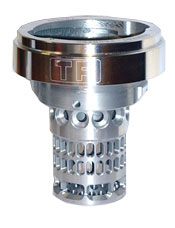Fuel theft from commercial vehicles is big business and can be difficult to spot. Matthew Burke explains how to protect the precious cargo every truck carries.
Theft of fuel is a growing problem that the transport industry is not keen to publicly acknowledge but, privately, many operators admit that it is costing them money and putting increasing pressure on already tight profit margins. Nobody knows what fuel theft costs the UK transport industry each year, but it surely runs into many tens of millions of pounds. With rising fuel prices and diesel at £1 a litre or more in many parts of the country, this could just be the tip of the iceberg. Only a fool would believe that fuel theft will not soar, as opportunist thieves, organised gangs and even staff exploit the potential which the rising market provides.
More and more hard-pressed hauliers – and those who run diesel cars and vans – will be forced to seek alternative – illegal – fuel sources to stay in business.
One of the biggest problems transport operators face is that fuel theft via the regular siphoning of small amounts is hard to detect in an industry where genuine fuel consumption can vary by as much as 25% according to a number of factors, such as the route chosen and the way the vehicle is driven. Given this wide range of variables, the loss of 15-20 litres at a time will almost certainly go unnoticed, but done regularly the losses add up over time.
For example, consider a haulier whose trucks average 2000 miles a week, often parking up overnight and thus vulnerable to opportunist thieves and even driver collusion. Each truck uses around 400 litres of fuel per week and he has 250 of them. Losing 20 litres from each truck at £20 a time adds up to £5000 a week and £260,000 a year – that’s a huge loss off the bottom line and yet the haulier has no way of knowing or, importantly, being able to prove the losses are taking place. Neither is it an extreme example: just consider the size of some of the largest truck fleets on our roads.
We should also not forget that fuel theft can take place internally; it is not just something that happens when trucks are on the road. Companies these days spend tens of thousands of pounds on security for their depots but they may well overlook transport beyond trying to ensure vehicles are not stolen. Organised criminals are clever and capable of looking beyond the obvious. Transport operators cannot therefore assume that just because a truck fills up or waits within the confines of an allegedly secure compound it is immune to fuel theft, which may on occasion be perpetrated in collusion with or by depot staff familiar with the in-house security measures and their a few litres to top up their diesel car, parked within the same secure compound, but each instance adds up.
Of course, a haulier would be able to detect the loss of an entire tank of fuel, but quite frankly what is he going to do about it? He has a vehicle possibly stranded, the schedule is wrecked, the customers are unhappy about late or failed deliveries and the police have weightier matters to worry about.
Gangs of organised criminals routinely steal tanks of fuel worth £500 and more and have the infrastructure in place to resell it on the black market. They operate secure in the knowledge that fuel theft is still considered a low-priority crime and that the chance of getting caught is small. If they are, the penalties are even smaller. The transport operator, meanwhile, risks losing everything. There is a clear message from all of this and that is to prevent fuel theft completely. It can be done: simply, cheaply and effectively.
Moreover, if you prevent fuel theft in the first place by preventing fuel being taken from the fuel tank, you also remove any worries that it may involve drivers or staff, and reduce the need for expensive depot guards, secure CCTV and other perimeter security measures. With all these obvious benefits, plus the fact that anti-fuel theft devices can be bought for a fraction of the cost of a new tyre – the entire UK trucking fleet could be protected for a one-off cost of £40 million (set against an annual transport industry fuel bill of £12 billion). So, does it makes sense for operators to specify them for new trucks and retro-fit existing vehicles? Well, yes and no. While security is important it is not everything in the modern commercial world and good intentions are seriously devalued if fitting an anti-fuel theft device unacceptably interferes with operational efficiency.
Unfortunately, until now that has been the reality. Many devices may stop or reduce fuel theft, but in the process they interfere with efficient fuel filling, producing welling, foaming and splashback, and are not capable of fuel filling at rates up to 120 litres/min, which is rapidly becoming the norm as more high-speed pumps are introduced in the UK and Europe. Adding to an operator’s difficulties, a lot of these devices need to be drilled for fitting or glued for fixing and are not transferable between vehicles. Some are too long to stop theft in the upper levels of a fuel tank, others can be compromised with a simple piece of wire to enable siphoning.
Given all this, it is understandable that many fleet operators have been hedging their bets. But the good news is that they do not have to any longer. Practical solutions that work exist.
aide automotive has a range of anti siphoning devices for truck, van, bus & coach.
